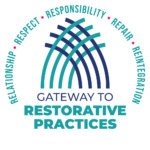
By Dr. Marian Fritzemeier, Ed.D.
Your first grader now attends school all day rather than the typical half day kindergarten at most schools. Parents may feel confident their child is used to school routines, but several aspects of first grade are “new” to kinders.
Here’s what may be “new” in your child’s first grade day and parent action you can take to help your child adjust quicker to first grade.
New: First graders eat lunch at school and have more recesses
My grandson Parker couldn’t wait until he became a first grader. “Matthew* says we get more recesses.”
I try to shed reality on the situation. “But you’ll be in school longer.”
“But I have more recesses.” His statement is actually true. Parker’s third grade friend trumps Grams.
“I hope it works out for you,” I add.
He excitedly informed me the other night, “I have recess after breakfast, in the morning, at lunch, and in the afternoon. I have four recesses.” What could be more important to first grade boys and maybe some girls?
Parker’s used to eating a snack during the morning recess because his kindergarten teacher called it “snack recess.” It’s lunch that’s the challenge. He’s so excited for recess, he barely eats his lunch.
Parent Action: Check to see if your child’s school site requires students to eat a certain amount of time before they are dismissed. If not, make a suggestion. Ideally schools should require students to eat for at least ten minutes. Most kids will eat if can’t leave.
Otherwise, your first grader may not be eating much at lunch or skipping lunch all together. For kids who eat hot lunch at school, requiring time to eat is especially important since parents don’t have any idea if their child is eating or not.
Parent Action: Share with your child your expectations for eating lunch. For example, “Eat half your sandwich and your sliced apples before you go out to play. You can eat your chips for afternoon snack.” Periodically check back with your child and see how eating lunch is going.
New: Bathrooms are located outside the classroom
When your little one attends preschool and kindergarten, typically the bathroom is inside the classroom or nearby. In most of these programs children use the bathroom whenever needed.
Bathroom During Recess. In first grade, children are expected to use the bathroom during recess. But how do they know that? What if they have to go during class? Do they interrupt the teacher? Do they wait until the teacher stops talking? What if they can’t wait anymore? That’s when accidents happen.
Parent Action: Talk to your first grader about bathroom situations. Make sure the child understands when and how to ask the teacher. Explain what to do if an accident happens. Assure your child that accidents happen even in elementary school.
New: There will be more children in the classroom and less adult help
Many school districts attempt to place a smaller number of children in kindergarten than in higher grades. Some schools expect the afternoon kindergarten teacher to “help” during the morning and vice-versa. Kindergarten teachers often have more parent/adult volunteers than other grades. More children in the class can mean less one-on-one time and less nurturing from the teacher. Additionally, the class may also have fewer volunteers which equates to less adult help.
Parent Action: Your child may need to adjust to less one-on-one assistance from an adult. Talk to your child about what to do if he/she is stuck and needs the teacher’s help. Maybe your child can ask a table partner or look at the directions on the dry erase or chalk board. Find out what helps your child.
Parent Action: If at all possible, try to occasionally volunteer in your child’s classroom. Some employers provide time off from work so parents can volunteer at school or chaperone field trips. Parker’s school is fortunate that they still have field trips. Sometimes they walk to the nearest high school for a program in a larger auditorium and sometimes they take a bus.
Help from Home. If you have limited time, offer to work on a home project that helps your child’s class. Teachers most always have things volunteers can do. Perhaps you can label file folders, count fundraiser money, or cut paper for an activity.
With a better understanding of what’s “new” to first graders and trying some parent action tips, before you know it first grade will not feel so “new” to both you and your child.
That is until your child is a “new” second grader!
* Fictitious name

